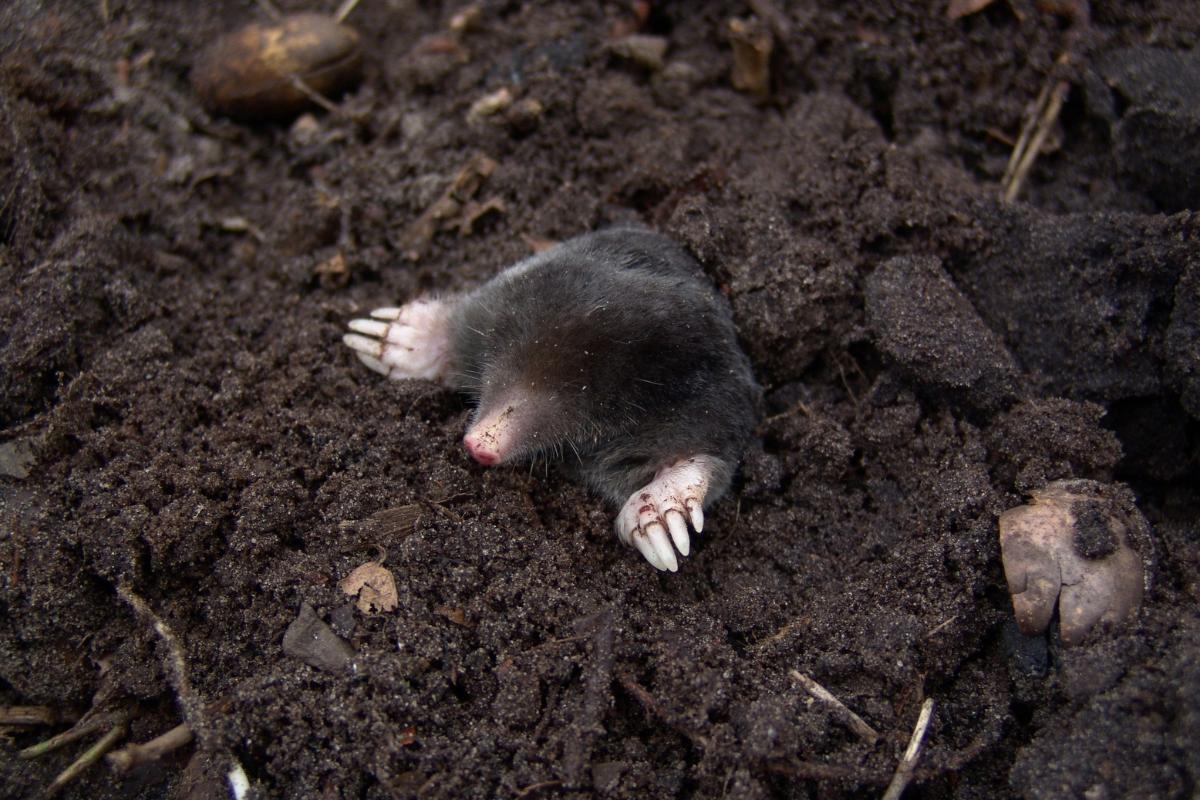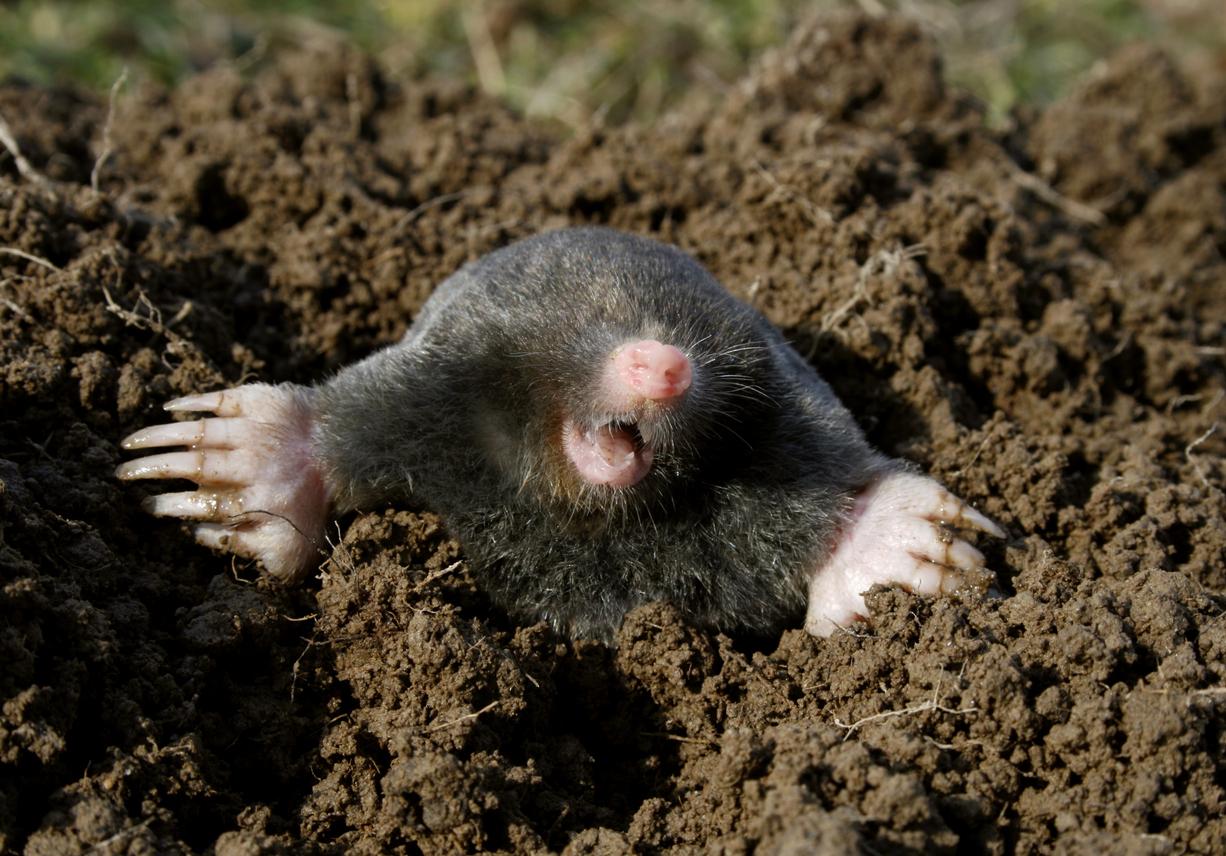Facts About Moles You Never Knew


These fascinating mammals have spent millions of years adapting to a life beneath the surface, becoming true champions of the dark, subterranean world. While most are familiar with their burrowing activities, some species even thrive in aquatic environments. Beyond their remarkable digging skills, moles possess a surprising array of unique adaptations and behaviors.
In this AnimalWised article, we'll explore fascinating facts of moles, their unique physical features, how they survive and hunt in darkness, and the surprising diversity within this group.
What is the meaning of Talpidae?
Talpidae refers to the scientific family that encompasses most types of moles, with a few exceptions. In other words, it's the animal family of true moles.
Living underground, moles are insectivorous mammals perfectly adapted for their subterranean lifestyle. Belonging to the Talpidae family, these creatures have sleek, elongated bodies, short but powerful legs, and impressively strong claws on their forelimbs – ideal tools for digging extensive tunnel networks.
But moles are more than just burrowers. Their tunneling plays a vital role in the ecosystem. By churning the soil, they aerate it, allowing air and water to penetrate deeper. This also mixes the soil layers, promoting the breakdown of organic matter and the circulation of nutrients, which benefits plants and other organisms.

Characteristics of moles
Moles are mammals superbly adapted to life underground. Let's delve deeper into their key characteristics and adaptations:
- Their elongated, cylindrical bodies allow them to navigate tunnels with ease.
- Short, powerful legs and strong claws on their front limbs make them burrowing champions. Interestingly, some mole species have an extra thumb on each forepaw, giving them a total of eight claws.
- Their fur is dense, short, and water-repellent, allowing them to move easily through wet soil and stay warm in their cool, underground environment.
- Due to their dark environment, many mole species have small, underdeveloped eyes.
- A keen sense of smell and touch helps them navigate tunnels and find prey in the darkness. Eimer's organs, specialized touch organs with thousands of nerve endings, further enhance their perception.
- Moles have a high reproductive rate with short gestation periods.
- Newborn moles are blind and hairless, relying on their mothers for survival in their early weeks.
- Moles are generally solitary animals, only interacting with each other during mating season.
- Despite limited vision, moles have a well-developed sense of hearing that helps them detect predators and potential threats above ground.
Be sure to read this other article, where we discuss some other animals that also eat insects.
Where do moles live?
Moles dig extensive tunnel networks through their preferred habitat: soil rich in organic matter. This organic-rich soil provides two key benefits for moles. First, it offers a readily available food source of earthworms and insects. Second, it's easier to dig through compared to denser, compacted soils.
Moles are surprisingly adaptable. While well-drained soils in gardens, farms, and moist forests are ideal for burrowing, they can be found in diverse environments. This includes coastal dunes, scrublands, and even wastelands, as long as the soil allows for digging and offers enough prey.
This adaptability allows them to thrive in various climates, from the tropics to the boreal zone. However, their populations are typically higher in areas where digging is easier, and food sources are more abundant.

What do moles eat?
Moles are omnivorous mammals that primarily feed on a variety of foods they find underground. Their main diet consists of a wide range of insects, including beetles, larvae, ants, and termites, which they locate while burrowing.
Earthworms are a significant part of a mole's diet due to their high protein content. The organic-rich soil they prefer is often teeming with these soft-bodied invertebrates, making them a readily available and nutritious meal. Additionally, moles consume other small invertebrates found underground, such as spiders, centipedes, and snails.
While their diet primarily comprises invertebrates, moles may also consume small vertebrates like frogs, mice, and small reptiles, although this is less common. On occasion, moles may eat roots, bulbs, and tubers of plants they encounter while digging, particularly during times when other food sources are scarce.

What is the behavior of moles?
Moles are generally solitary animals, only interacting with each other during mating season. They fiercely defend their territory and burrow systems from other moles.
Moles use scent marking to communicate with each other. They have glands located on their bodies that release specific odors, allowing them to signal territory boundaries, warn off rivals, and potentially even attract mates.
Though not their primary means of communication, moles do have a limited repertoire of vocalizations. These include hisses, squeaks, and clicking sounds, which might be used during territorial disputes or mating interactions.
Moles spend most of their lives underground, rarely venturing above the surface. Moles are active year-round, both day and night. They constantly forage for food, which requires continuous digging and exploration within their tunnel systems.
For more fascinating creatures, check out our article on the top 10 most solitary animals in the world.
How do moles reproduce?
Moles have a high reproductive rate, and females can produce multiple litters during the breeding season, which typically occurs between February and May in temperate regions. To attract mates, females secrete pheromones to indicate their availability. Unlike many other animals, moles do not engage in traditional courtship behaviors.
Moles reproduce in a process that's relatively quick compared to some other mammals, but their young require significant care in their early life.
Gestation in moles lasts approximately 4 to 6 weeks, with females giving birth to litters ranging from 2 to 5 offspring, although the average litter size is typically 3 to 4 young. Females construct nests in side chambers within their tunnel systems, where they care for and nurse their young until they are capable of independent survival. The mother nurses her pups for several weeks, and they begin to grow fur around 2 weeks old.
Some mole species exhibit embryonic diapause. This means that even though they are mated, the fertilized egg won't implant in the mother's uterus until certain environmental conditions are met, such as a longer day length or improved food availability. This helps ensure the young are born during a time when resources are plentiful.
Examples of talpidae or topos
The Talpidae family boasts a fascinating diversity, housing not only various types of moles, but also shrew moles and other subterranean mammals. Some notable members of the Talpidae family include:
- European mole or common mole (Talpa europaea):this species is one of the most well-known and widely distributed moles in Europe. It features shiny black fur and is renowned for its extensive networks of underground tunnels.
- Star-nosed mole (Condylura cristata): native to the eastern United States and Canada, this unique mole species is characterized by its extremely sensitive nose adorned with fleshy tentacles, which it uses to detect prey underground.
- American shrew mole (Neurotrichus gibbsii): this small mole species is native to the west coast of North America, ranging from southeastern Alaska to northern California.
- Iberian desman or Pyrenean desman (Galemys pyrenaicus): this semi-aquatic species is primarily found in the Iberian Peninsula, including regions in Spain and Portugal, as well as some areas of southern France. Unfortunately, this species is classified as Endangered (EN) by the IUCN (International Union for Conservation of Nature).

If you want to read similar articles to Facts About Moles You Never Knew, we recommend you visit our Facts about the animal kingdom category.
- Catania, K. C. (2000). Epidermal sensory organs of moles, shrew moles, and desmans: a study of the family talpidae with comments on the function and evolution of Eimer's organ . Brain Behavior and Evolution, 56(3), 146-174.
- Quaglietta, L. 2022. Galemys pyrenaicus (amended version of 2021 assessment) . The IUCN Red List of Threatened Species 2022: e.T8826A214429993. https://dx.doi.org/10.2305/IUCN.UK.2022-1.RLTS.T8826A214429993
- Stone, R. D. (1987). The social ecology of the Pyrenean desman (Galemys pyrenaicus) (Insectivora: Talpidae), as revealed by radiotelemetry . Journal of Zoology, 212(1), 117-129.









